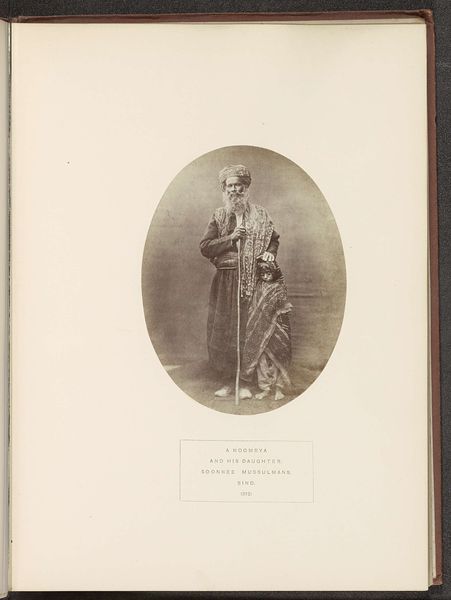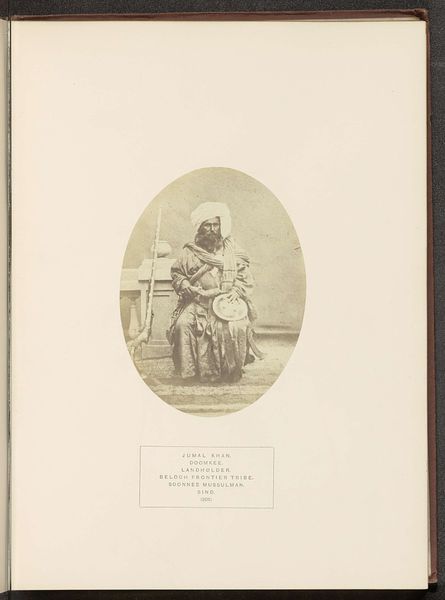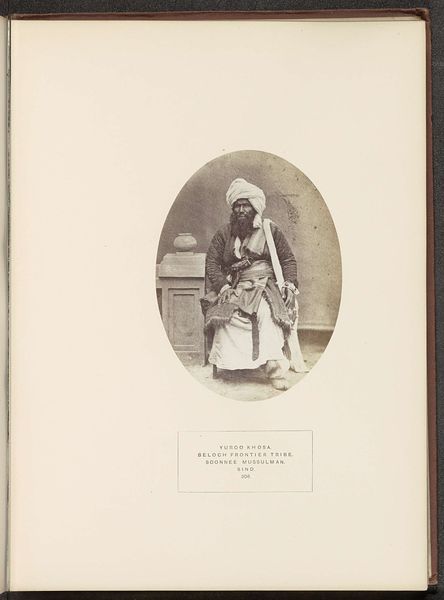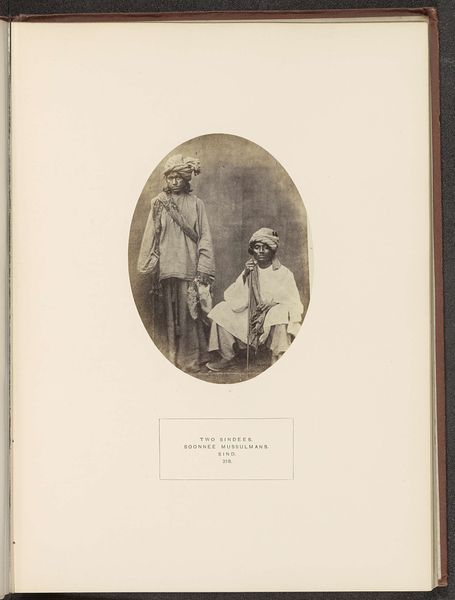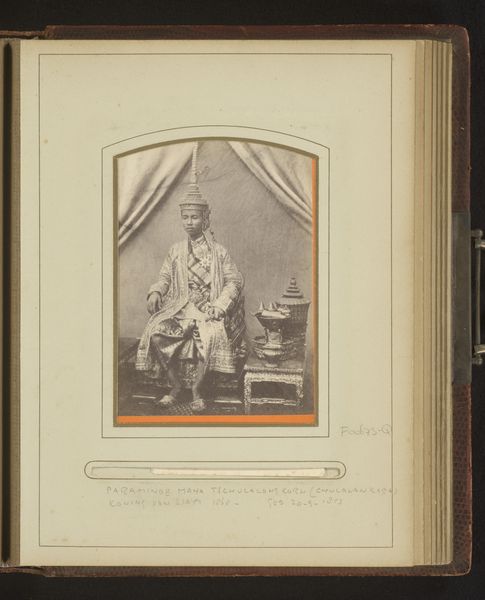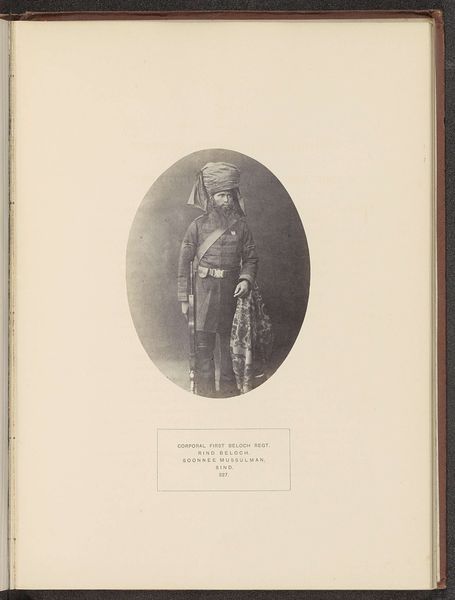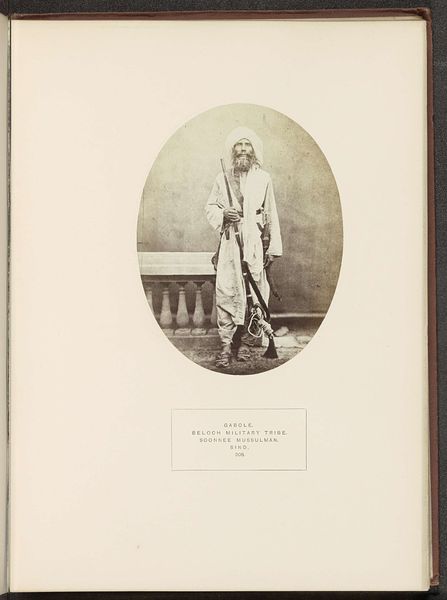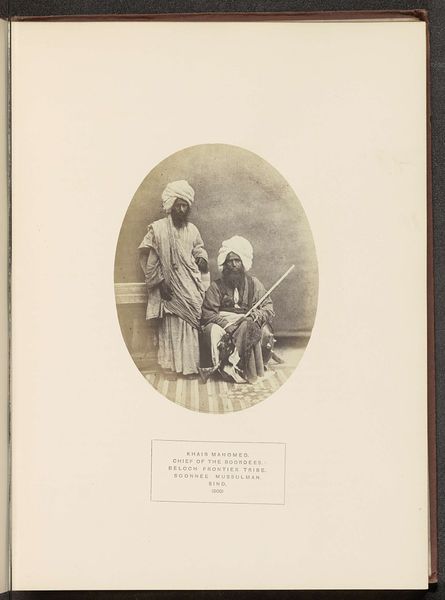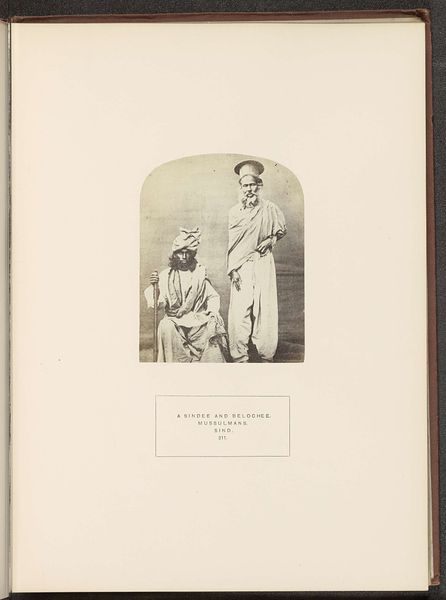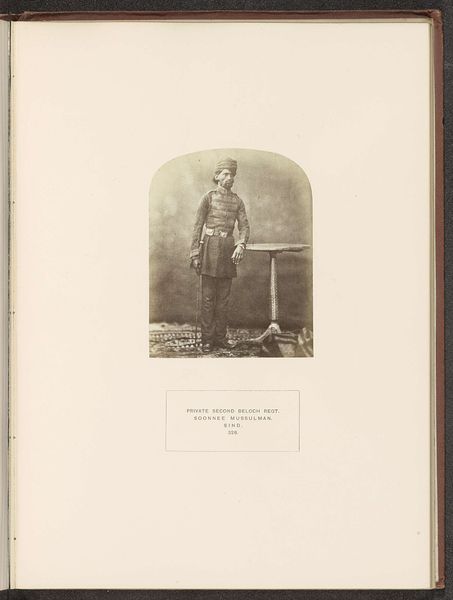
albumen-print, photography, albumen-print
#
albumen-print
#
portrait
#
photography
#
orientalism
#
albumen-print
Dimensions: height 175 mm, width 129 mm
Copyright: Rijks Museum: Open Domain
Curator: This photograph, an albumen print taken before 1869 by Shepherd & Robertson, is titled "Portret van twee zwervers van de Meena-stam in Delhi," or "Portrait of two vagrants of the Meena tribe in Delhi". It offers a fascinating glimpse into 19th-century India. Editor: It’s stark, isn’t it? Their expressions are so... unreadable. And the composition, so clinical. It feels less like a portrait and more like a record. Curator: Precisely. Photography at this time was frequently used for documentation, particularly by colonial powers. The framing, the subjects positioned frontally, the cool tones of the albumen print – all speak to a desire for objective capture. Editor: Objective? The original caption designates them as “Hindus of Low Caste. Vagrants." That labeling seems pretty loaded to me, shaping the viewer's perception right from the start. What was the intention behind producing and circulating images like this? Curator: Often, it was about constructing and reinforcing societal hierarchies. Visual representations, such as this photograph, helped to codify difference and legitimize the colonial project, presenting certain groups as “other” and, therefore, subjects of governance. Editor: And who were Shepherd & Robertson? Commercial photographers? Were they particularly interested in the Meena community? Curator: They were indeed a commercial photography studio operating in India. Their work often included portraiture of Indian people. However, the motivation behind creating images like these was often deeply rooted in Orientalist perspectives, perpetuating stereotypes for a Western audience. Editor: It's a disturbing reminder of how photography, even with its claim to realism, can be weaponized to enforce prejudice and reinforce colonial power dynamics. Understanding this is critical when engaging with these types of historical images. Curator: It does raise important questions about representation and the role of photography in shaping perceptions. It's a visual artifact loaded with social and historical implications that invite continuous reflection.
Comments
No comments
Be the first to comment and join the conversation on the ultimate creative platform.
